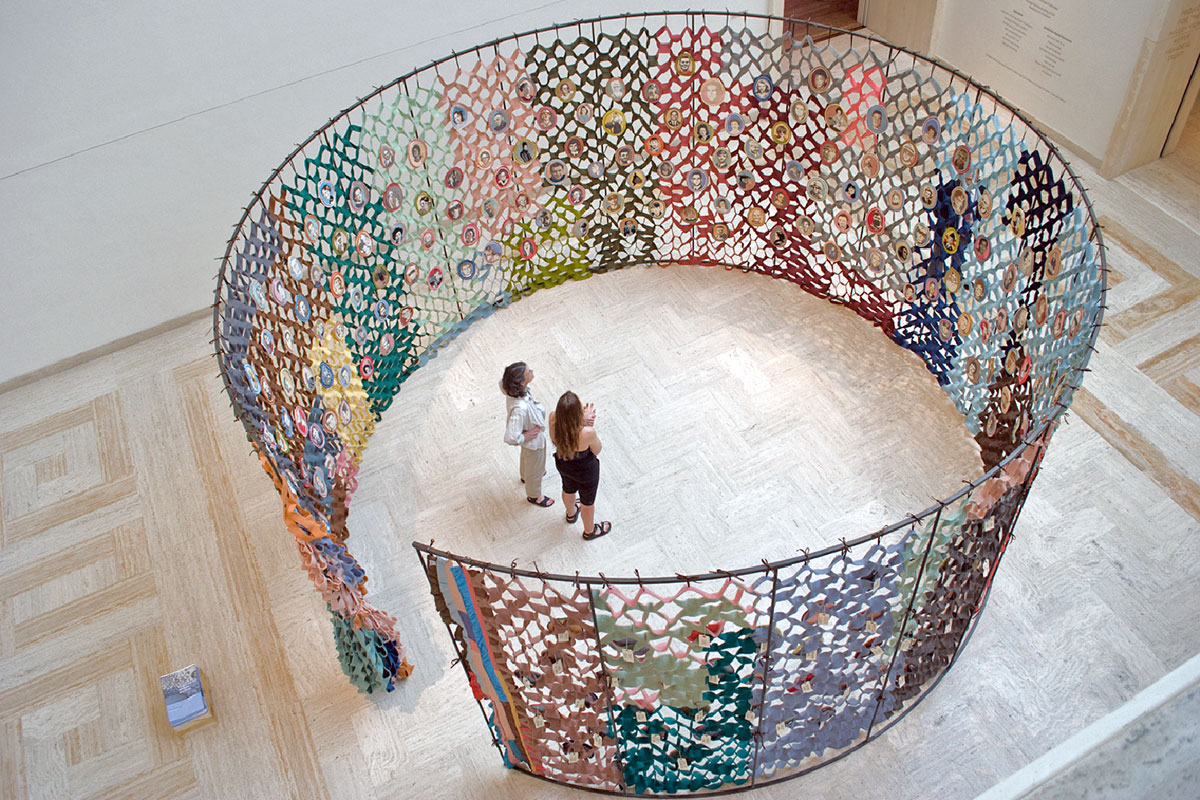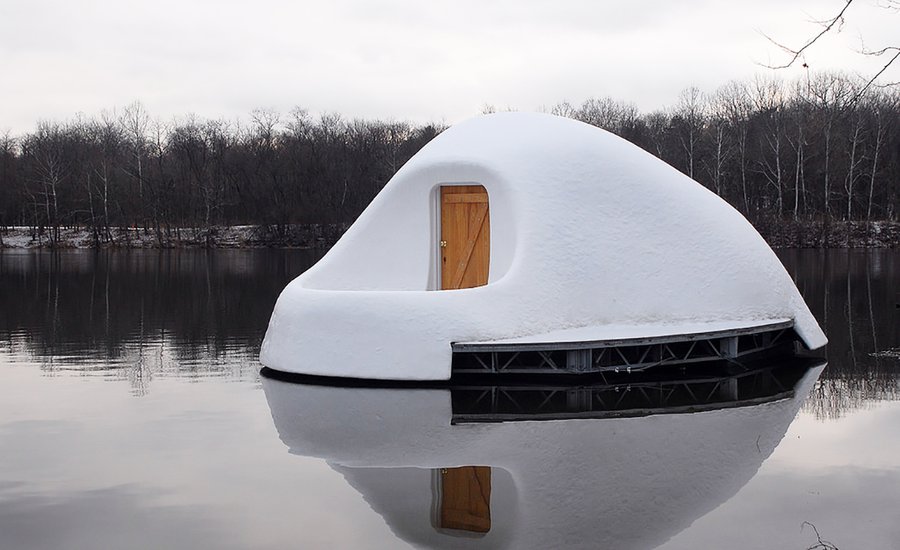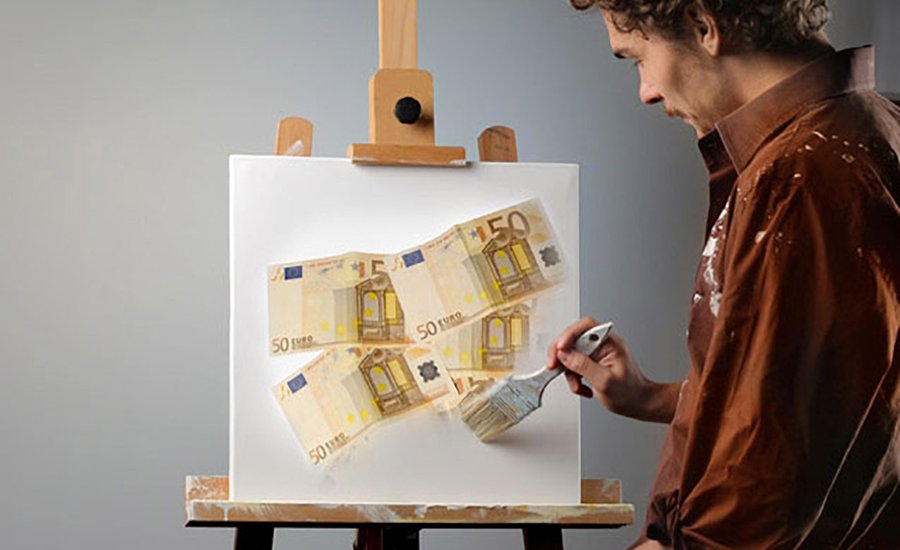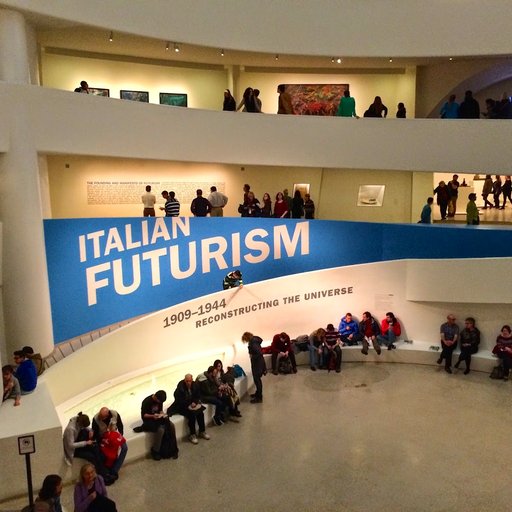If you’re an artist hoping to make a living from your work, you’ve probably realized by now that it’s not so easy. The most obvious and sought after way to make money is of course, to sell your work to collectors—which most often requires gallery representation. But while this might be a lucrative and viable option for some artists (namely painters and other artists working in easily-commodifiable media), many artists find the pressures of the art market too restricting and otherwise unable to support their practice. Performance, social practice, and even video and installation art are harder sells, and the artists who employ these mediums are often left wondering how on Earth they can afford to continue doing what they do.
Here, we’ve laid out a menu of options for artists looking to fund their practice. Don’t get it wrong—getting paid for making art is tough no matter how you go about it, but let this be a guide that in addition to providing some hard and fast resources, reaffirms your commitment to making “difficult”, ephemeral, durational, or otherwise unsalable art.
1. Grants and Fellowships Are Great—Especially for Marginalized Artists
 A project funded by the Native Arts & Cultures Foundation Fellowship
A project funded by the Native Arts & Cultures Foundation Fellowship
Grants and fellowships are really, really amazing—if you can get them. Like most of the options on this list, grants and fellowships involve an application process. So it’s important to make sure you’re finding a balance between spending time in the studio, and spending time filling out forms and putting together applications. That being said, only apply to opportunities that you think you might actually have a shot at getting.
Some of the best grants (and by “best” we mean most generous with funding and/or most prestigious and likely to look great on your CV), are nomination-only—meaning you can’t apply unless you’re nominated by a panel selected by the foundation giving the grant; the Joan Mitchell Foundation , and the MacArthur Fellowship are two of these such grants.
But don’t worry, there are literally thousands of grants that you can apply to without being nominated. A few grants are inclusive of all American artists working in all visual art mediums, from organizations like National Endowment for the Arts , Creative Capital , and the Pollack-Krasner Foundation , for instance. But this inclusivity is uncommon. Most grants and fellowships are dedicated to either a certain demographic (specific minorities, women, LGBTQ people, etc.), a particular region of the country, or a certain medium (fiber arts, ceramics, photography, etc.). You’ll need to sift through the options; both NewYorkArtists.net and New York Foundation for the Arts are good places to start, with comprehensive (and somewhat unwieldy) databases.
Here are a few grants that stood out to us: The Asian Cultural Council gives selected Asian artists up to $10,000 to pursue their work in non-commercial settings either in the US or in Asian countries. Brooklyn Arts Council Grants offer project-based grants from $1,700 to $2,100 to artists that live in Brooklyn. Photographers can benefit from the Aaron Siskind Foundation which awards photo-based artists up to $10,000. The Native Arts & Cultures Foundation Fellowship awards emerging Native American artists a whopping $20,000. For African-American artists, the William H. Johnson Prize offers a hard-won $25,000. The National Association of Latino Arts & Culture Grants have a variety grants ranging from $1,000 to $20,000 for emerging and established Latinx artists. And the Astraea Lesbian Foundation for Justice helps artists who are committed to LGBTQI human rights find funding, promotion, and support.
Applying for grants, fellowships, and awards is a great option for artists who identify with marginalized communities, are able to articulate the importance and significance of their work, and, in some cases, have specific ambitious projects in mind that require funding. Just know that that larger the award, the less likely you are to win it.
2. Paid Residencies Offer Time AND Money
 The Indy Island Residency in Indianapolis
The Indy Island Residency in Indianapolis
Residencies provide dedicated space and time for artists to concentrate on their work, and sometimes, they also offer money. Check out our comprehensive article on paid artist residencies to see a variety of programs—from a studio inside a floating fiberglass island, to a traveling studio inside a shipping container—these residencies offer travel, creative space, artistic inspiration—and a paycheck.
The tricky thing with artist residencies is that, even if they're paid, they can exclude artists with full-time jobs or otherwise inflexible job schedules. The artists who may need dedicated time and resources for their practice are often the ones unable to get it, since they can’t afford to leave their jobs to go sit in the woods for several weeks or months.
If this is you, don’t worry, there still may be some options. Although many residencies whisk you away to remote and distant locations, there are probably residencies in or near your hometown that offer resources and studio space to local artists. New York certainly has some great ones— Smack Mellon , Lower Manhattan Cultural Council , and Residency Unlimited just to name a few.
3. There Is A TON of Money in Public Art
 David Shrigley
's MEMORIAL in Central Park
David Shrigley
's MEMORIAL in Central Park
We know what your thinking… Isn’t public art mostly terrible? Well, yes, but it doesn’t have to be! Most artists don’t realize how much money is out there waiting to be used for public art, which is perhaps why public art, or "plop art" (a pejorative term that references the tendency of public art to have little to do with it's surroundings), often lacks fresh perspectives and creativity.
The Percent for Art Program (PCA) mandates that one percent of a city's budget for construction projects go to public art. (One percent might not sound like a lot, but it is—considering how much money cities spend on construction and infrastructure.) PCA programs vary from state to state, so we can’t give you any hard and fast rules for how to apply, but each city tends to have it’s own priorities during the selection process. For example, most artists selected in Los Angeles are local, and New York favors art that “reflects the diversity of New York City” and thus almost all of the 300-plus percent-for-art projects in New York are from mid-career artists of color. But remember, you aren't necessarily limited to applying to your hometown; many cities accept applications from artists all over the globe.
Perhaps the reason more artists don’t embark on big (multi-million dollar-big) budget civic projects is because the vetting process can be quite intense. Applications are very labor intensive, sometimes requiring pages upon pages of detailed proposals and schematics. The thing to keep in mind when applying for public art commissions, is that the people who are reviewing applications are often not art-world people—so it's important to avoid International Art English and use clear and consise wording to describe your proposal. Your biggest hurdle will be to convince them that you're able to carry out an ambitious project with many moving parts, personnel, and long-term timelines.
If you have experience as a project manager, have administered budgets in the past, or have carried out large-scale art projects in the past, you might have a shot. Otherwise, if you’re seriously considering a career in public art, you may want to first find funding—through grants or residency opportunities—to produce a civically-scaled project on your own. That way, you’ll have experience you can refer to when you apply for public art commissions.
4. Teaching Has Its Perks
This one may not totally count, since it involves working in exchange for funding your art practice. But teaching art—especially at accredited colleges and universities—can provide some income while also opening up doors to new opportunities for your own work. Access to facilities and labs are a huge plus, especially if you’re spending hundreds of dollars every month to use a ceramic kiln or printmaking studio. And, many schools also let faculty sit in on classes, so you could potentially get a free education while you’re at it. Plus, if you stick with it long enough and are able to get tenure, you may be able to get funding and exhibition opportunities through your school. Art programs like to brag about the amazing things that they're faculty does, which means they're incentivized to progress your art career, and in some cases, will award you grant money to do it.
Teaching jobs are easier to get in some cities than others, but it always helps to have some experience. If you're currently in art school, take advantage of any opportunities to teach that are available to you, even if it's a teaching assistantship for school credit. Take pictures of student work and hold onto them—many job applications for teaching positions require examples of student work. And, don't forget that the professor you're assisting may be the future writer of your recommendation letter.























